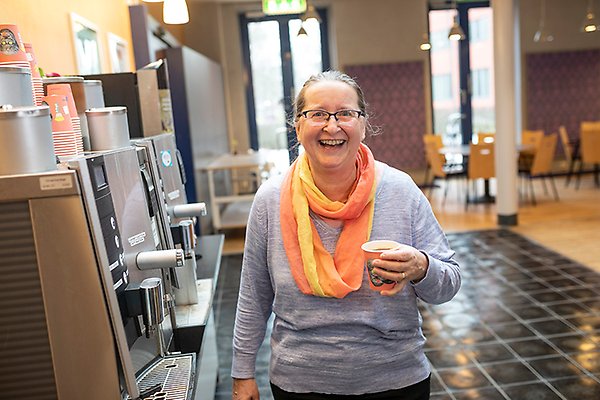Silvelyn Zwanzig tells about her research in mathematical statistics

Silvelyn Zwanzig. Photo: Mikael Wallerstedt.
Silvelyn Zwanzig was born in 1954 and grew up in East Berlin, where she studied mathematics at Humboldt-Universität. At the time, several mathematical areas were merged, allowing Silvelyn to study optimization, cybernetics, numerics, algebra and other areas.
After completing her studies, she moved to the Weierstraß Institute and wrote her dissertation, Second order asymptotics in nonlinear regression, in 1984.
Once the Berlin Wall fell in 1989 and Germany was reunited, the Academy closed. Silvelyn applied for a postdoc at the University of Hamburg, where whe wrote her habilitation thesis, Estimation in nonlinear functional error-in-variables models. Habilitation is a degree at the highest scientific education level, which has no equivalent in today’s Swedish university system. The work gave her the necessary qualifications to become a professor, but she did not apply for promotion.
“I was the second woman to complete a habilitation in mathematics at Hamburg University. That was rewarding enough.”
Later she began working with astrometry, which deals with careful determination of the positions and movements of celestial bodies.
“Mathematical statistics originated in astrometry, making it a natural step for me as a mathematical statistician. I worked to refine methods and manage random data.”
Silvelyn moved to Sweden to work as a senior lecturer at Uppsala University while her family remained in Berlin.
“Uppsala has very motivated students, which makes my work fun. The University’s research is
top notch, creating a very positive pressure.”
Silvelyn works with applied mathematics. She enjoys interdisciplinary work and is encouraged by the great demand for mathematical statistics skills.
“Everyone needs statistics! It is important to be able to offer mathematically based methods so that other scientific fields can achieve good results. Genetics, climate research, and a number of other areas – they all need mathematical statistics.”
Today, she researches ways to handle the huge amounts of data – big data – that are available.
“The data sets that exist are so heterogeneous that we cannot handle them without new methods.”
In April 2020, Silvelyn became a professor of mathematics. While her family is very proud, titles have never been particularly important for her.
“To spark interest in mathematical statistics among students, to see in eagerness in their eyes gives me great satisfaction, just as when former students get in touch after several years and thank me for my lectures.”
When she retires, she will move back to Berlin.
“It would be fun to devote myself to playful mathematics education for young children.”
Probability theory and statistics
Probability theory is the theory for models of random events that can be repeated but the results of which cannot be predicted in advance, even with a complete grasp of all conditions. The theory is a twin theory to statistics, where you create methods, principles and criteria for processing data from experiments and observations of reality.
